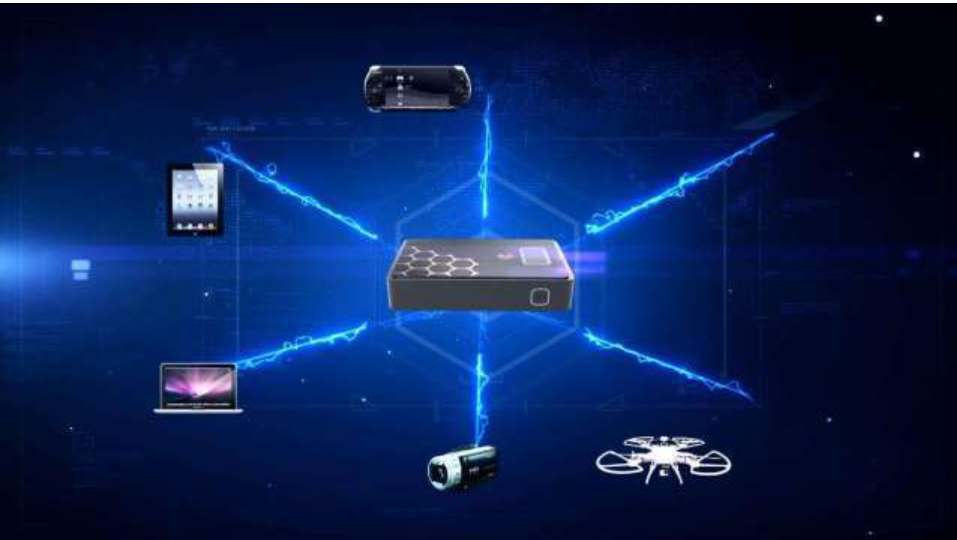Graphene Sensors in Smart Homes: Revolutionizing Multifunctional Monitoring
The evolution of smart home technology relies heavily on innovative sensor systems that provide accurate, efficient, and real-time monitoring of environmental and operational parameters. Graphene-based multifunctional sensors are leading this transformation by offering unparalleled sensitivity and versatility in detecting parameters like temperature, humidity, and odors. This article explores how graphene sensors are enhancing the functionality and efficiency of smart home appliances, their current applications, and future prospects.

Why Graphene Sensors for Smart Homes?
Graphene, a single layer of carbon atoms arranged in a hexagonal lattice, boasts exceptional properties that make it ideal for smart home applications:
- High Sensitivity
- Graphene’s ability to detect minute changes in environmental factors ensures precise monitoring of temperature, humidity, and gases.
- Multifunctionality
- A single graphene sensor can measure multiple parameters, reducing the need for separate sensors and simplifying device designs.
- Energy Efficiency
- Low power consumption makes graphene sensors perfect for battery-operated and energy-conscious smart home devices.
- Flexibility and Durability
- Graphene’s flexibility allows integration into a variety of form factors, from rigid appliances to flexible wearable devices.
- Scalability
- Advances in graphene production enable the development of cost-effective sensors suitable for mass-market smart home systems.
Applications of Graphene Sensors in Smart Homes
1. Temperature Detection
Graphene’s exceptional thermal conductivity makes it highly effective for temperature sensing:
- Climate Control Systems
- Graphene temperature sensors integrated into smart thermostats provide accurate real-time temperature readings, enabling energy-efficient heating and cooling solutions.
- Kitchen Appliances
- In ovens and refrigerators, graphene sensors monitor internal temperatures to ensure optimal performance and food safety.
- Wearable Smart Home Interfaces
- Embedded in wearables, graphene sensors help adjust home environments based on individual comfort levels.
2. Humidity Monitoring
Humidity levels are crucial for maintaining comfort and preventing issues like mold growth:
- Air Quality Monitors
- Graphene humidity sensors detect changes in moisture levels, enabling air purifiers and dehumidifiers to optimize indoor air quality.
- Laundry and Storage Solutions
- In washing machines and storage units, these sensors ensure that humidity levels remain within safe ranges to protect clothing and household items.
- Smart Bathrooms
- Graphene-based humidity sensors integrated into smart mirrors or fans can help prevent condensation and improve ventilation efficiency.
3. Odor and Gas Detection
Graphene sensors excel at detecting volatile organic compounds (VOCs) and other odors:
- Smart Kitchens
- Graphene odor sensors in range hoods and refrigerators detect cooking fumes or spoiled food, sending alerts to homeowners.
- Safety Systems
- Gas detection sensors monitor for harmful gases like carbon monoxide, methane, or propane, ensuring home safety.
- Pet-Friendly Homes
- Specialized sensors can identify pet-related odors, enabling automated cleaning systems to maintain freshness.
4. Integrated Multifunctional Monitoring
Graphene’s multifunctional capabilities allow for seamless integration across various smart home devices:
- Smart HVAC Systems
- A single graphene sensor can monitor temperature, humidity, and air quality, providing comprehensive data to optimize system performance.
- Intelligent Lighting
- Graphene sensors detect light intensity and temperature, enabling adaptive lighting solutions that save energy and enhance ambiance.
- Home Security
- Graphene-based pressure and proximity sensors in doors and windows can detect intrusions, offering an additional layer of security.
Advantages of Graphene Sensors in Smart Home Applications
- High Accuracy
- Graphene sensors provide highly accurate measurements, ensuring optimal performance in smart home systems.
- Compact and Lightweight
- The atomic-scale thinness of graphene sensors allows for compact device designs without compromising functionality.
- Rapid Response Time
- Their fast response enables immediate detection and action, critical for safety and efficiency in smart homes.
- Customizable Sensitivity
- Graphene’s properties can be tuned to detect specific parameters, making it highly adaptable to diverse smart home needs.
- Eco-Friendly Solutions
- The energy efficiency and durability of graphene sensors contribute to more sustainable smart home technologies.
Current Market Trends and Developments
- Integration with IoT
- Graphene sensors are being integrated into IoT ecosystems, enabling real-time data sharing and advanced automation.
- Enhanced Durability
- Research into graphene composites is enhancing sensor durability, ensuring reliable performance in demanding environments.
- Affordable Production
- Advances in graphene manufacturing techniques, such as chemical vapor deposition (CVD), are reducing costs, making these sensors accessible to a broader market.
- AI-Enhanced Sensing
- Combining graphene sensors with AI algorithms allows for predictive analytics and more personalized smart home experiences.
Challenges in Graphene Sensor Deployment
- Production Scalability
- While graphene production has improved, achieving consistent quality for large-scale applications remains a challenge.
- Integration with Existing Systems
- Incorporating graphene sensors into traditional smart home ecosystems requires overcoming compatibility issues.
- Standardization
- Establishing performance and quality standards is crucial for widespread adoption.
- Cost Concerns
- Despite decreasing production costs, graphene sensors are still more expensive than conventional alternatives in some cases.
Future Outlook for Graphene Sensors in Smart Homes
- Advanced Home Automation
- Graphene sensors will enable smarter automation, where devices communicate seamlessly to create a fully responsive home environment.
- Wearable Home Controls
- Flexible graphene sensors in wearables will allow users to control smart home systems with gestures or biometrics.
- Enhanced AI Integration
- Graphene’s rapid sensing capabilities will pair with AI for predictive home management, such as adjusting settings based on weather or user habits.
- Sustainability in Smart Living
- The energy efficiency and longevity of graphene sensors align with the growing emphasis on eco-friendly technologies in smart homes.
- Hybrid Sensors
- Combining graphene with other nanomaterials will unlock new functionalities, broadening the scope of smart home applications.
Conclusion
Graphene-based sensors are revolutionizing smart home technologies by offering multifunctional monitoring capabilities with unmatched sensitivity and efficiency. From temperature and humidity control to odor detection and air quality monitoring, these sensors are enhancing the convenience, safety, and sustainability of smart living. As research and development continue to overcome challenges, graphene sensors are poised to become a cornerstone of the next generation of intelligent home systems, offering unparalleled integration and functionality.

